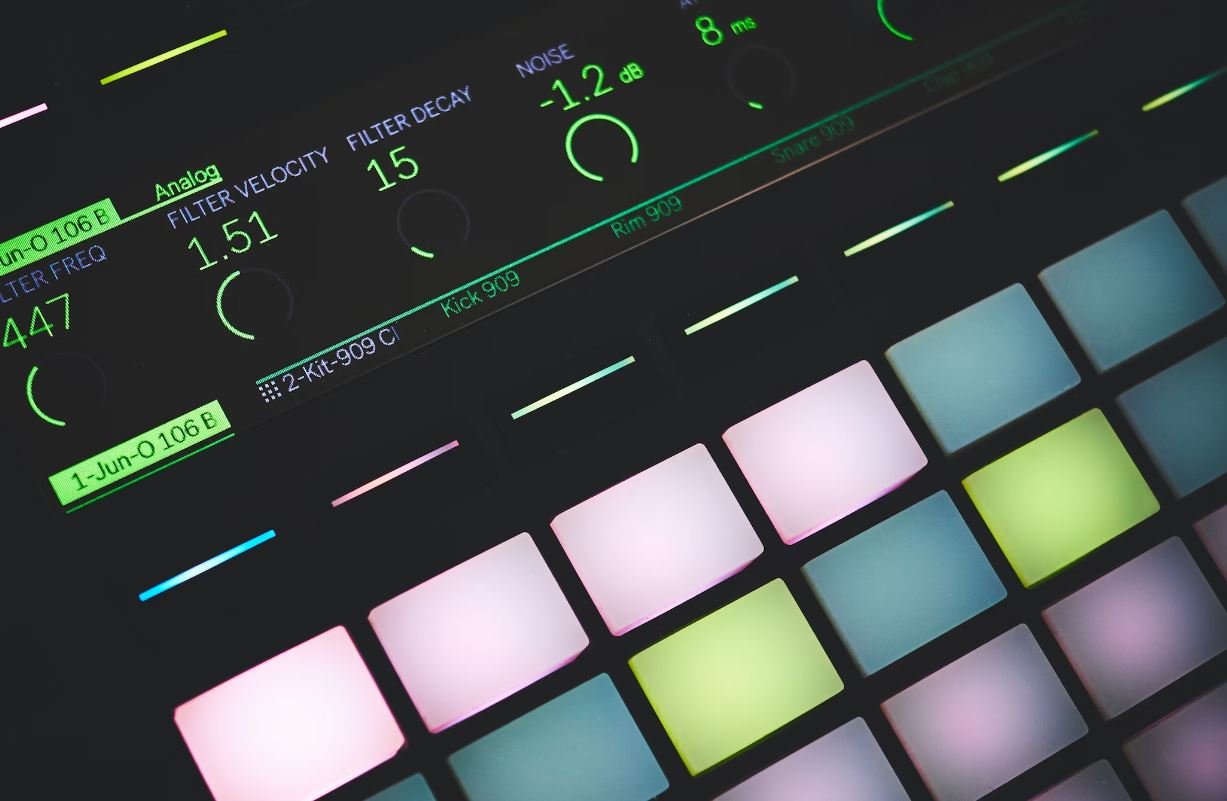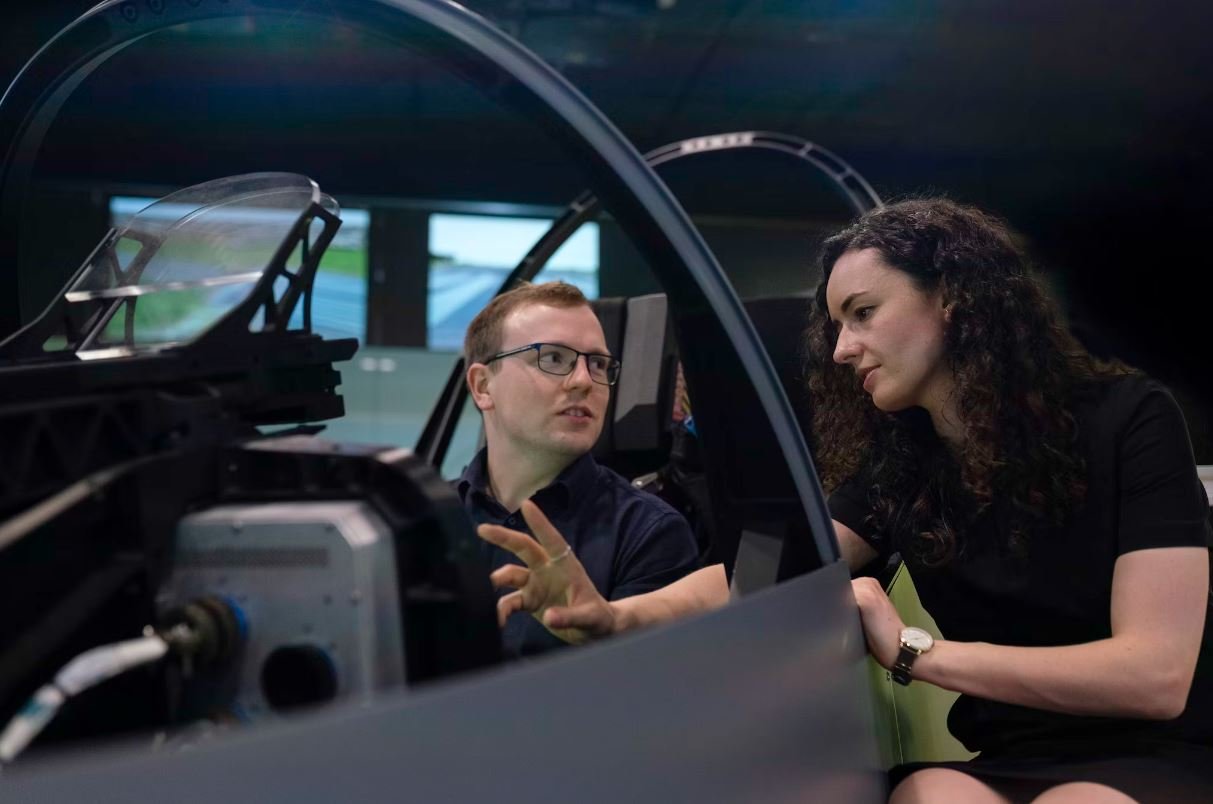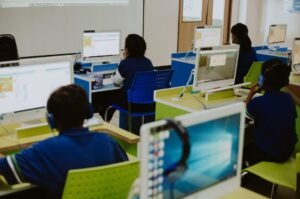Artificial Intelligence Can Replace Human Intelligence Debate
Artificial Intelligence (AI) has been a topic of debate in recent years, with proponents arguing that it has the potential to replace human intelligence in various fields. AI is a branch of computer science that aims to create machines capable of performing tasks that would typically require human intelligence. From self-driving cars to automated customer service, AI technology continues to advance, raising the question of whether it can indeed surpass human intelligence.
Key Takeaways
- AI has the potential to replace human intelligence in certain tasks.
- Automation through AI can lead to increased efficiency and cost savings.
- Ethical considerations and human oversight are crucial in AI development.
- AI is more complementary to human intelligence than purely a replacement.
The Rise of Artificial Intelligence
According to recent studies, AI has made significant progress in areas such as image recognition, natural language processing, and decision-making algorithms. The ability of AI systems to analyze vast amounts of data in real-time enables them to identify patterns and make predictions with greater accuracy. *AI algorithms can process information at lightning speed, outperforming human capabilities in specific domains*.
Applications of AI
AI has found its way into numerous industries, ranging from healthcare to finance and manufacturing. Self-driving cars, for example, rely on AI to interpret data from sensors and navigate roads. Automated customer service chatbots use natural language processing to assist users. Moreover, AI has also impacted fields like cybersecurity, improving the detection and prevention of cyberattacks. *AI is revolutionizing the way we interact with technology and the tasks it can accomplish*.
AI as a Replacement for Human Intelligence
While AI has the potential to perform specific tasks better than humans, the notion of complete replacement of human intelligence is not realistic. AI systems excel at tasks that involve processing large amounts of data, performing repetitive tasks, or making predictions based on patterns. However, human intelligence encompasses emotional intelligence, creativity, and critical thinking, which are currently difficult to replicate in machines. *Humans have the ability to think outside the box and adapt to novel situations, qualities that are not easily replicated in AI algorithms*.
The Role of Human Oversight in AI
As AI technology continues to advance, considerable ethical considerations arise. Ensuring human oversight and accountability in AI development is essential to tackle issues such as bias, privacy concerns, and unforeseen consequences. AI should be viewed as a tool to augment human decision-making rather than a complete replacement. *Human involvement is necessary to set the framework and goals for AI systems, ensuring that they align with societal values*.
Realizing the Synergy of AI and Human Intelligence
Rather than replacing human intelligence, AI and human intelligence can work together synergistically. AI systems can enhance human capabilities, allowing humans to focus on complex problem-solving and high-level decision-making, while delegating more mundane and repeatable tasks to machines. In areas such as healthcare, AI can assist doctors in disease diagnosis or drug discovery, leading to improved patient outcomes. *The collaboration between AI and human intelligence has the potential to drive innovation and improve efficiency in various sectors*.
Table 1: Applications of AI in Different Industries
| Industry | Applications of AI |
|---|---|
| Healthcare | Medical diagnostics, drug discovery, patient monitoring |
| Finance | Financial risk analysis, fraud detection, algorithmic trading |
| Manufacturing | Process automation, quality control, predictive maintenance |
Table 2: Strengths and Limitations of AI
| Strengths | Limitations |
|---|---|
| Fast data processing | Lack of creativity |
| Pattern recognition | Inability to understand context |
| Improved accuracy and efficiency | Lack of emotional intelligence |
Table 3: AI vs Human Intelligence
| AI | Human Intelligence |
|---|---|
| Can process large amounts of data | Emotional intelligence |
| Performs repetitive tasks accurately | Creative thinking |
| Relies on algorithms and patterns | Adaptability to new situations |
Evolving Technology
Artificial intelligence is an ever-evolving field, and it will continue to transform industries and society as a whole. As machine learning and deep learning algorithms improve, AI systems will become more sophisticated and capable. It is important to recognize that AI is not a threat to human intelligence but rather a tool that can empower humans to achieve more. *Embracing AI technologies responsibly and understanding their potential and limitations will lead to a harmonious integration of AI and human intelligence*.
In Summary
Artificial intelligence has the potential to replace certain aspects of human intelligence but not entirely. While AI can perform specific tasks with exceptional precision and speed, human intelligence encompasses valuable qualities that are difficult to replicate in machines. The key lies in understanding the strengths and limitations of AI, leveraging technology to augment human capabilities, and maintaining human oversight to ensure ethical and responsible development. The future of AI lies in collaboration between human and artificial intelligence, leading to remarkable advancements across various sectors.

Common Misconceptions
1. Artificial Intelligence can completely replace human intelligence
One common misconception about artificial intelligence (AI) is that it has the potential to completely replace human intelligence. While AI has made significant advancements in recent years, it is important to understand that AI is a tool designed to augment human capabilities, not replace them entirely.
- AI can automate repetitive and mundane tasks, freeing up human workers to focus on more complex and creative tasks.
- AI lacks human qualities such as empathy and intuition, which are crucial in various industries like healthcare and customer service.
- Human intelligence involves emotional and social intelligence that cannot be replicated by AI algorithms.
2. AI will lead to widespread unemployment
Another misconception is that AI will lead to mass unemployment. While the integration of AI may result in job displacement in certain industries, it is also likely to create new job opportunities and transform the nature of work.
- AI will require human expertise for its development, maintenance, and decision-making process.
- AI will create new jobs, such as AI trainers, data scientists, and AI ethicists.
- AI can enhance human productivity, allowing workers to focus on tasks that require critical thinking and creativity.
3. AI is infallible and unbiased
AI is often falsely perceived as being free from errors and bias. However, AI systems are built and trained by humans, and they can inherit human biases and limitations.
- AI algorithms can reinforce existing social biases if the training data is biased or incomplete.
- AI systems may struggle to comprehend context, leading to inaccurate or biased decision-making.
- AI lacks ethical judgment and relies on humans to define and incorporate ethical principles into its programming.

Jobs Most at Risk of Automation
In recent years, there has been significant debate about the potential impact of artificial intelligence (AI) on the workforce. As technology continues to advance, it is important to examine which jobs are most vulnerable to being replaced by AI. The following table highlights some of the occupations that are at high risk of automation in the future.
| Occupation | Risk of Automation |
|————————-|——————–|
| Data Entry Keyers | 99% |
| Telemarketers | 99% |
| Bank Tellers | 98% |
| Bookkeeping Clerks | 98% |
| Retail Salespersons | 92% |
| Photographic Processors | 92% |
| Cashiers | 97% |
| Customer Service Reps | 54% |
| Waiters/Waitresses | 72% |
| Farmers | 48% |
AI’s Impact on Healthcare
The potential of artificial intelligence in the healthcare industry is immense. AI can assist medical professionals in diagnosing diseases, analyzing patient data, and even performing surgical procedures. This table presents various applications of AI in healthcare.
| AI Application | Purpose |
|——————————–|—————————————————————————–|
| Medical Imaging Analysis | Enhancing accuracy in interpreting medical images |
| Robot-Assisted Surgery | Assisting surgeons during complex procedures |
| Virtual Nursing Assistants | Providing personalized care, monitoring patients remotely |
| Predictive Analytics | Identifying individuals at high risk for specific diseases |
| Drug Discovery | Accelerating the development of new drugs |
| Precision Medicine | Tailoring medical treatments to individual characteristics |
| Virtual Reality Therapy | Treating mental health disorders using immersive experiences |
| Telehealth | Enabling remote patient consultations and monitoring |
| Wearable Devices and Sensors | Tracking vital signs and collecting real-time health data |
| Electronic Health Records (EHR)| Streamlining healthcare processes and improving data accessibility and storage|
Ethical Considerations in AI Development
The development of artificial intelligence raises important ethical questions that need to be addressed. This table highlights some key ethical considerations that arise in relation to AI.
| Ethical Consideration | Description |
|—————————-|————————————————————————————–|
| Privacy and Data Security | Protection of personal information and prevention of misuse |
| Bias and Fairness | Ensuring AI systems do not discriminate against certain individuals or groups |
| Accountability and Liability| Allocating responsibility for AI actions and potential harm caused |
| Transparency | Making AI systems explainable and understandable to users |
| Human Control | Maintaining control over AI systems and preventing autonomous decision-making |
| Job Displacement | Addressing the impact of AI on employment and reskilling/upskilling of workers |
| Autonomy and Governance | Establishing regulations and frameworks to govern the development and use of AI |
| Intellectual Property | Ownership and attribution of AI-generated content and innovations |
| Equity and Access | Ensuring equal access to AI technologies and avoiding exacerbation of inequalities |
| Safety and Risk | Minimizing potential risks and ensuring AI systems do not cause harm |
AI in Education
Artificial intelligence is transforming the field of education, offering personalized learning experiences and new educational tools. This table showcases various AI applications in the education sector.
| AI Application | Purpose |
|—————————-|———————————————————————————-|
| Adaptive Learning Systems | Tailoring educational content and methods to individual students’ needs |
| Intelligent Tutoring | Providing personalized feedback and guidance to students |
| Automated Grading | Efficiently evaluating and grading assignments and exams |
| Virtual Classrooms | Enabling remote learning and collaboration among students |
| Natural Language Processing| Enhancing language learning and communication skills |
| Educational Bots | Offering interactive support and answering students’ questions |
| Content Creation | Developing AI-generated educational content, such as quizzes or lesson plans |
| Data Analytics | Analyzing student performance and identifying areas for improvement |
| Learning Management Systems| Streamlining administrative tasks and organizing educational resources |
| Gamification | Integrating game elements into learning experiences for increased engagement |
Risks and Limitations of AI
While artificial intelligence has immense potential, it is important to acknowledge its risks and limitations. This table presents some key challenges associated with AI development and implementation.
| Risk or Limitation | Description |
|——————————-|——————————————————————————|
| Bias and Discrimination | AI systems can perpetuate biases present in existing data |
| Lack of Emotional Intelligence| Inability to understand and respond appropriately to human emotions |
| Job Displacement | Automation can lead to the loss of certain roles and industries |
| Ethical Decision-Making | AI lacks a moral compass and may struggle to make complex ethical decisions |
| Security and Hacking | Vulnerability to cybersecurity threats and potential misuse of AI |
| Lack of Creativity | Difficulty in generating truly novel or innovative ideas |
| Interpretability | Limited ability to explain and justify the reasoning behind AI decisions |
| Limited Contextual Understanding| AI may struggle to understand the full context and make accurate judgments |
| Data Dependence | AI systems heavily rely on quality and diverse data for optimal performance |
| Energy Consumption | Computing power required for AI applications can have a considerable impact |
AI in Transportation
The advancement of artificial intelligence has significant implications for transportation, leading to improvements in safety, efficiency, and convenience. This table highlights some of the ways AI is transforming the transportation sector.
| AI Application | Purpose |
|—————————–|————————————————————————————————|
| Autonomous Vehicles | Self-driving cars and other autonomous vehicles that reduce the need for human drivers |
| Traffic Management | AI-powered systems optimizing traffic flow, reducing congestion, and enhancing road safety |
| Fleet Management | Efficient management of vehicle fleets, including scheduling, maintenance, and monitoring |
| Predictive Maintenance | Anticipating machinery failures and scheduling maintenance to prevent breakdowns |
| Real-Time Navigation | AI-guided navigation systems providing up-to-date traffic information and optimal routes |
| Intelligent Transportation Systems| Implementing smart infrastructure to improve overall transportation efficiency |
| Ride-Sharing & Hailing | AI platforms facilitating carpooling and on-demand transportation services, like ride-hailing |
| Demand Forecasting | Predicting travel demands and adjusting transportation services based on real-time data |
| Railroad Optimization | AI algorithms optimizing train schedules, rail network operations, and maintenance activities |
| Drone Delivery | Using autonomous drones for efficient and speedy delivery of goods and medical supplies |
AI and Robotics
Artificial intelligence is closely intertwined with robotics, enabling the development of advanced robotic systems with human-like capabilities. The table below showcases some notable examples of the fusion of AI and robotics.
| AI-Enabled Robotics | Description |
|——————————-|———————————————————————————————-|
| Drones | Unmanned aerial vehicles with autonomous navigation capabilities |
| Companion Robots | Robots designed to provide companionship and assistance to elderly and disabled individuals |
| Industrial Robots | Automated machines capable of performing complex tasks in manufacturing environments |
| Surgical Robots | Robotic systems assisting surgeons during surgical procedures |
| Service Robots | Robots deployed in various service industries like hospitality, healthcare, or retail |
| Exoskeletons | Wearable robotic devices designed to enhance human strength and mobility |
| Education Robots | Robotic systems designed to assist in educational settings, providing interactive experiences |
| Agritech Robots | Robots used in agricultural processes like planting, watering, or harvesting crops |
| Search and Rescue Robots | Robots aiding in locating and rescuing individuals in disaster-stricken areas |
| Household Robots | Robots providing assistance in household tasks and routines, like cleaning or cooking |
AI’s Impact on Financial Services
The financial services industry has embraced artificial intelligence to drive innovation and enhance customer experiences. This table highlights some notable applications of AI in financial services.
| AI Application | Purpose |
|——————————-|————————————————————————————–|
| Fraud Detection | Identifying suspicious transactions and patterns in real-time |
| Investment Advisory | Offering personalized investment recommendations based on individual goals |
| Algorithmic Trading | Automated trading utilizing powerful algorithms and real-time market data |
| Risk Assessment | Evaluating creditworthiness, loan applications, and insurance underwriting |
| Chatbots | AI-powered virtual assistants providing customer support and answering inquiries |
| Automated Customer Service | Using AI to handle routine customer interactions, reducing waiting times |
| Financial Planning Tools | AI-driven tools helping individuals plan for retirement, budget, and save |
| Market Sentiment Analysis | Utilizing AI techniques to analyze social media and news sentiment for investment |
| Insurance Claim Processing | Streamlining the claims process by automating document analysis and verification |
| Robo-Advisors | Automated investment platforms managing portfolios based on algorithms |
The Future of AI and Humanity
As the capabilities of artificial intelligence continue to evolve, questions arise regarding AI’s long-term impact on humanity. This table explores different perspectives on AI’s potential future with regard to human civilization.
| Future of AI Scenario | Description |
|—————————–|————————————————————————————————-|
| Utopian Society | AI leads to advancements in healthcare, productivity, and sustainability, benefiting all |
| Dystopian Domination | AI surpasses human intelligence and takes control, potentially leading to adverse consequences |
| Augmented Humanity | AI enables humans to enhance their own capabilities through cognitive and physical augmentation |
| Economic Inequality | AI exacerbates income inequality, increasing the wealth gap and job polarization |
| Collaborative Partnership | Humans and AI work together synergistically, leveraging respective strengths for mutual benefit |
| Global Regulatory Framework | The establishment of international regulations to govern the development and deployment of AI |
| Ethical AI Development | AI progress prioritizes ethical considerations, such as fairness, transparency, and sustainability |
| AI-Assisted Living | AI solutions embedded within human existence, improving healthcare, well-being, and lifespan |
| Conscious Machines | Self-aware AI systems that possess consciousness and exhibit emotions and moral reasoning |
| AI as a Tool | AI remains subservient to humans, acting as a powerful tool for various beneficial applications |
Conclusion
Artificial intelligence has sparked a profound and ongoing debate concerning its ability to replace human intelligence in various domains. While AI offers immense potential for transforming industries, improving efficiency, and enhancing lives, it also presents ethical challenges, risks, and uncertainties. As technology progresses, it is important to strike a careful balance between harnessing AI’s capabilities and addressing the associated concerns. By understanding the implications, risks, and limitations, society can navigate the AI revolution responsibly and ensure it remains a sustainable and beneficial tool for humanity’s progress.
Frequently Asked Questions
What is artificial intelligence (AI)?
Artificial intelligence (AI) refers to the development of computer systems that can perform tasks that typically
require human intelligence, such as speech recognition, problem-solving, decision-making, and learning.
How is AI being used in various fields?
AI is being used in a wide range of fields, including healthcare, finance, transportation, education, and
manufacturing. It is used to enhance efficiency, effectiveness, and accuracy in performing tasks, automating
processes, and aiding decision-making.
Can AI replace human intelligence?
The debate regarding whether AI can replace human intelligence is ongoing. While AI has made significant advances
in specific domains, it is currently limited to performing narrow tasks and lacks general human-like
intelligence.
What are the potential benefits of AI replacing human intelligence?
If AI were capable of replacing human intelligence, it could lead to increased productivity, reduced errors,
improved decision-making, and potentially free up time for humans to focus on more creative and complex
tasks.
What are the concerns associated with AI replacing human intelligence?
Concerns related to AI replacing human intelligence include job displacement, loss of human touch and empathy,
ethical implications, biases in decision-making, privacy concerns, and the potential for AI systems to go
rogue.
What are the limitations of current AI technologies?
Current AI technologies have limitations such as lack of common sense reasoning, inability to understand
context, difficulty dealing with unstructured data, susceptibility to biases in training data, and limited
ability to handle novel situations outside their training data.
How can AI and human intelligence complement each other?
AI can complement human intelligence by performing repetitive tasks, analyzing vast amounts of data,
identifying patterns, and generating insights. Humans can then utilize this information to make informed
decisions, exercise judgment, and perform tasks that require creativity, emotional intelligence, and ethical
considerations.
What role does ethics play in the AI vs. human intelligence debate?
Ethics play a crucial role in the AI vs. human intelligence debate. It involves ensuring that AI systems are
designed and used responsibly, addressing issues of bias, transparency, accountability, and the potential
impact on society as a whole.
Will AI ever achieve consciousness like humans?
The question of whether AI can achieve consciousness like humans is a subject of ongoing philosophical debate.
While AI can mimic certain aspects of human behavior, replicating true consciousness remains a significant
challenge.




